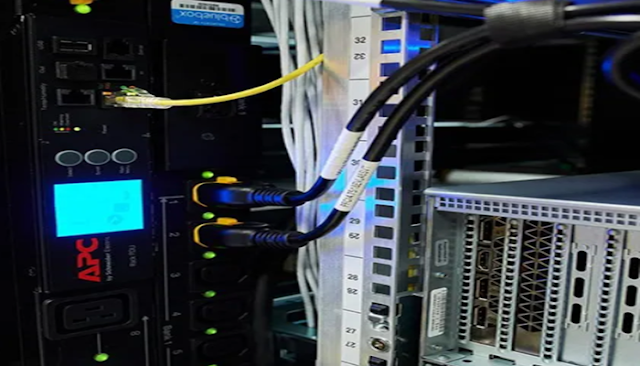When creating an aesthetically pleasing website, quick loading times are frequently challenging. Numerous high-quality photos can significantly slow down a website's speed.
There is, however, a way for websites that use such photos to achieve lightning-fast load times. Allow us to help you resolve this situation.
The solution is to use an image CDN, and we have prepared a comprehensive guide to help you understand this method.
What is an image CDN?
Images present a complex problem for a CDN in terms of providing the best possible version of an image to every device. Format, size, aspect ratio, compression, and visual quality are all factors that must be carefully considered when working with photos.
An Image CDN is a content delivery network specializing in optimizing and transforming photos in real time. Because of these enhancements, the underlying CDN is now better equipped to handle delivery.
Instead of being entirely separate CDNs, these utilize preexisting infrastructure to deliver optimized pictures to users.
How does a CDN for images operate?
An image CDN operates clearly and logically, from the user's initial request to the host's response.
The steps that lead to the CDN achieving its objective are listed below.
→ The user requests an image
A request is generated and sent to the CDN whenever a user visits a website.
The request is forwarded to the processing server by the CDN.
The CDN will request it from one of its processing servers if it is not already cached on its server.
→ Cache send
The processing server will forward an image appropriately if it already has a cached copy on file. If not, it will be retrieved from an external storage device or the repository.
→ Optimization
The processing server performs real-time image optimization, which also makes any necessary adjustments. The optimized photo is then copied and stored to speed up future requests. Finally, the processing server sends the image to the CDN.
→ Delivery via CDN
The user's device receives the image from the CDN server, which also caches it for later use.
Choosing the Ideal Image CDN
Factors like visitor volume, user location, and manipulation needs will help you choose a CDN that works best for your website or app. Determining how different companies stack up in price, features, and overall performance is essential to pick the best one.
Gcore Image Stack is the perfect choice for optimizing image delivery for businesses.
It's a robust CDN with many configuration settings for fine-tuning the delivery of images on your website or app.
The value of an image CDN for website performance
→ Quicker loading times
By compressing, optimizing, and delivering images from the closest PoP, CDNs shorten the time they load on websites and applications. Better user engagement and higher conversion rates result from faster load times.
→ An improved user experience
They offer users a seamless experience by optimizing images for various devices, resolutions, and network setups. Quickly loading, high-quality images improve the overall aesthetics of your website or application.
→ SEO Enhancements
Improved search engine rankings are influenced by quicker load times and better user experiences. By speeding up page loads and ensuring that your pictures are optimized for search engines, they can improve the SEO of your website.
→ Decrease in server load
Your server's workload is decreased by offloading image processing and delivery duties to the CDN, which can lower your bandwidth expenses while maintaining peak server performance.
Best features of image CDN
→ Enhancement
Compression
CDNs compress photos to make them smaller without losing visual quality. Compression techniques like lossy and lossless compression are used to balance quality and file size reduction.
Format choice
Image CDNs can consider a user's browser compatibility and network conditions when choosing an image format. For each situation, formats like WebP, JPEG, and PNG provide the best quality and compression.
→ Manipulation
Scaling
It can automatically scale pictures to fit the size and resolution of the user's screen. The photos will look great on various devices, while the file size will be reduced.
Cropping
With their help, you can deliver those that perfectly fit particular dimensions and aspect ratios. This feature helps develop responsive designs and preserve a uniform appearance across different platforms.
→ Cache
Cache management
Cache management tools offered by CDNs let you set individual caching policies for various kinds of images. This makes it possible to guarantee that your photos are efficiently cached and quickly served to users.
Invalidation of cache
They provide cache invalidation mechanisms to remove stale images from the cache. It guarantees that visitors to your website always see the most recent content.
→ Delivering Content Worldwide
Points of Presence
By reducing the physical distance between users and the server, image CDNs use a network of PoPs worldwide to deliver content to users, resulting in lower latency and quicker load times.
Anycast Routing
They employ the anycast routing method to point users toward the closest PoP. It further reduces latency and boosts overall performance by ensuring users connect to the nearest server.
Conclusion
Images enhance a website's visual appeal and contribute to its overall size and load time. Website and app owners who care about providing a positive user experience should prioritize optimizing media.
By choosing a suitable CDN that integrates easily with current setups and offers necessary transformation capabilities, delivering flawless photos across different devices can be made simpler.
Consider using Gcore stack, a top-notch CDN with a unique set of advantages that makes it a frontrunner. With this powerful tool, developers of websites and apps can easily optimize and serve up high-quality pictures to their customers.
Experience the power of this exceptional CDN now and take your digital presence to new heights.

No comments:
Post a Comment